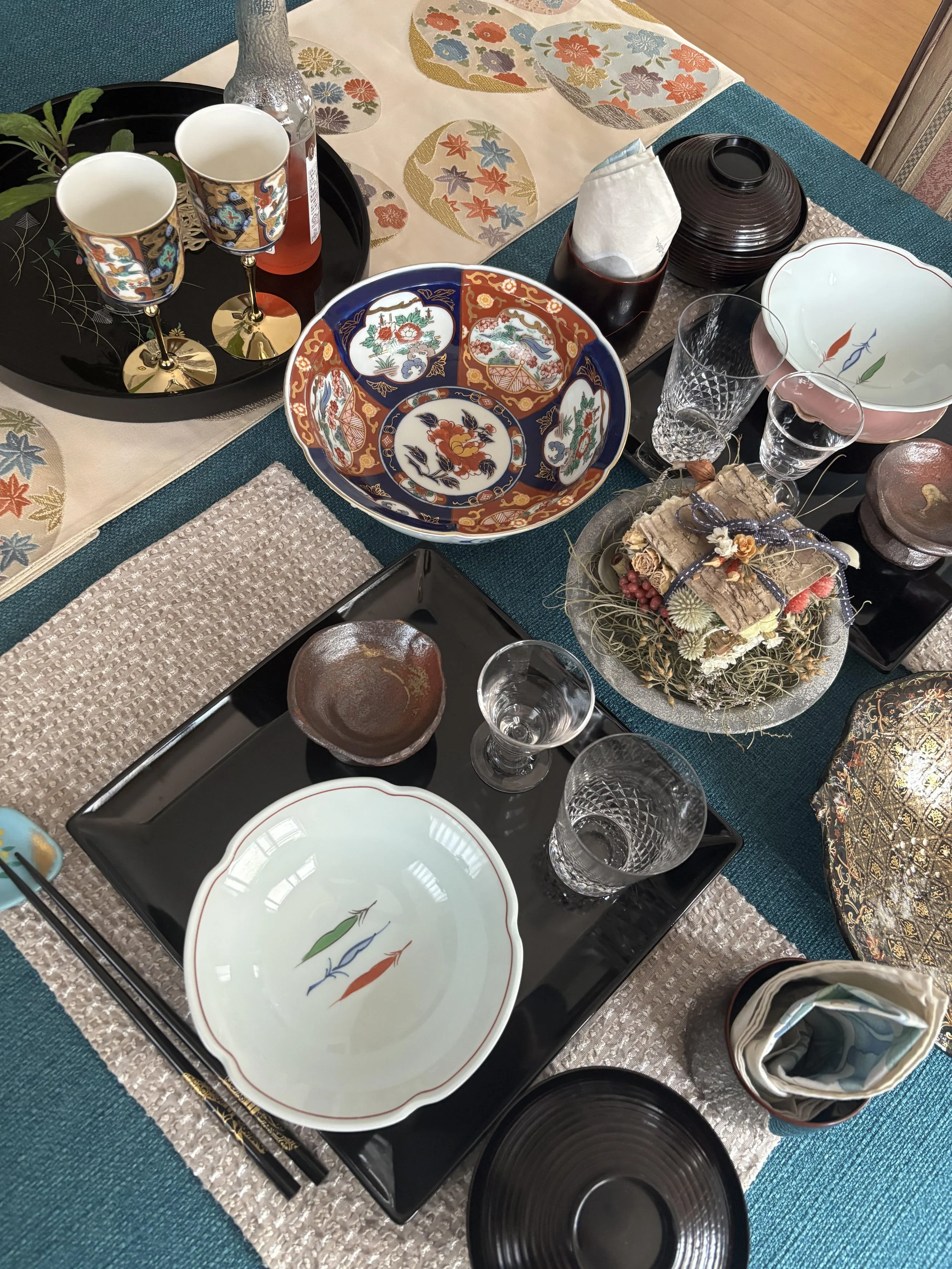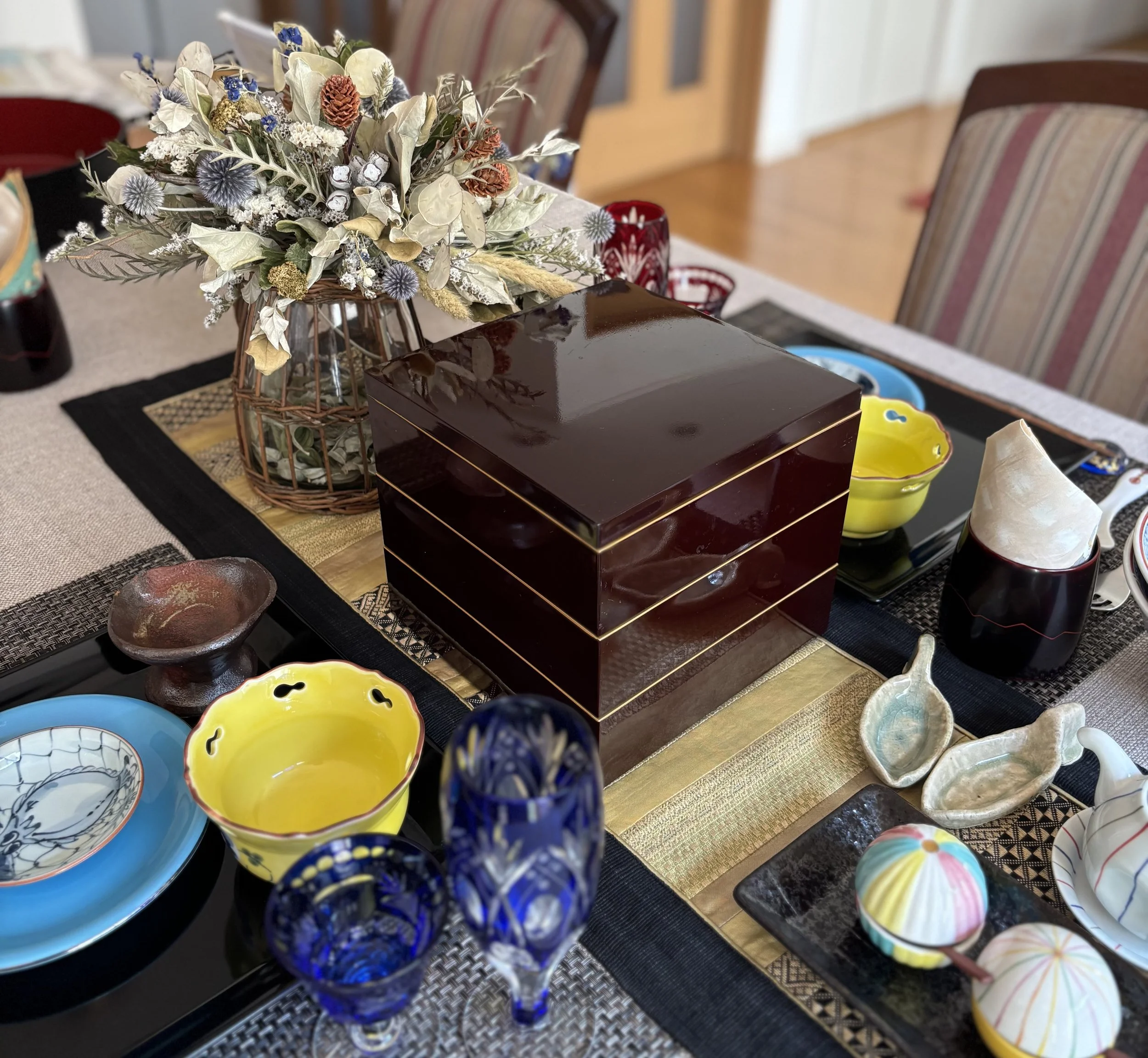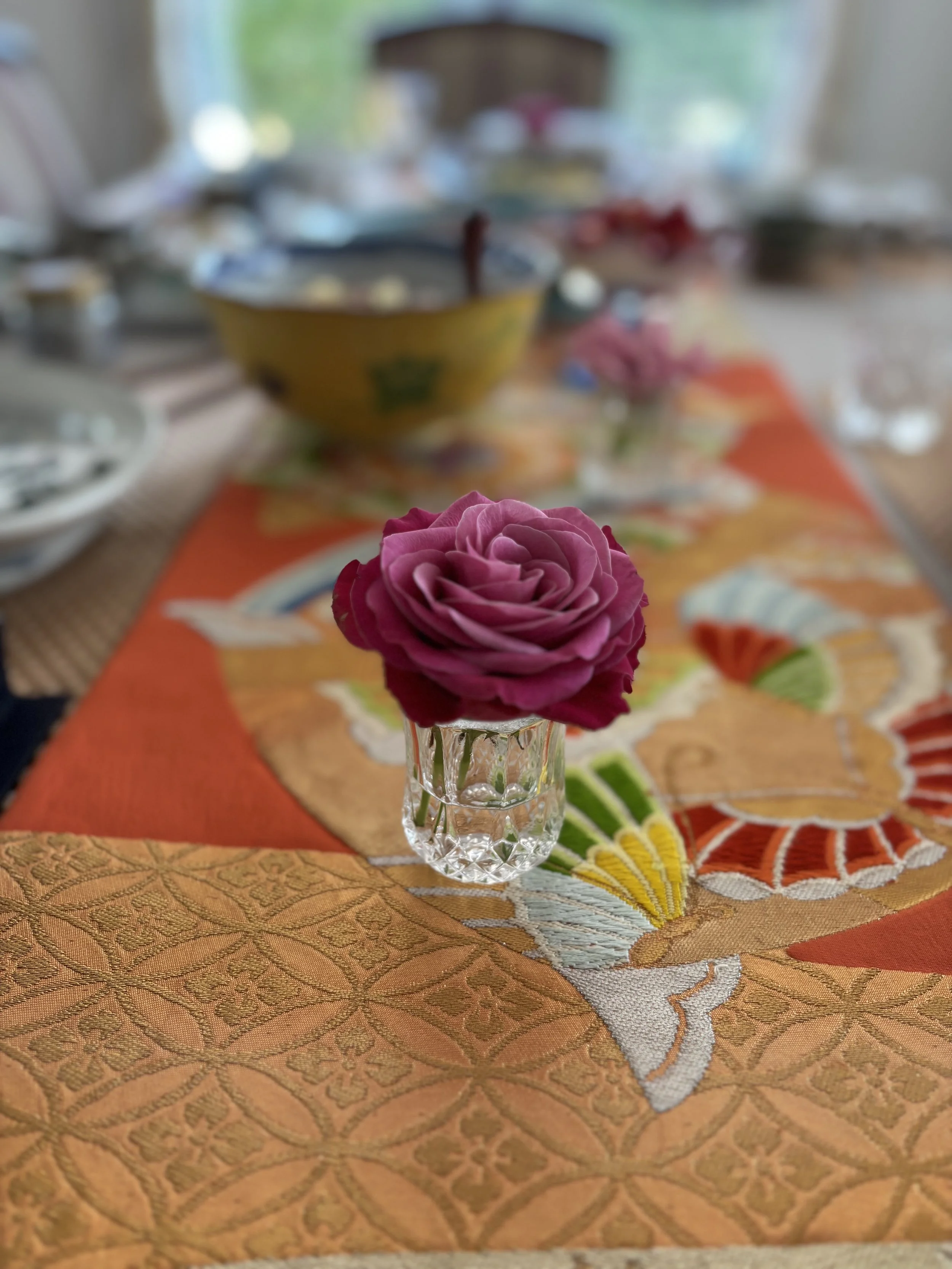Table coordination using Japanese tableware②- Japanese home cooking class in Tokyo
Preparing meals is more than just a daily routine. The dining table is a place for creative expression and a wonderful opportunity to strengthen bonds with family and friends — whether it’s a special occasion or an ordinary day. Here, you’ll find simple tips for effortless and elegant table coordination.
Table coordination using Japanese tableware- Japanese home cooking class in Tokyo
Please book from here.↓
https://www.byfood.com/ja/experiences/customizable-vegetarian-washoku-home-cooking-class-tokyo-968
Choose the One Piece That Inspires You
When planning your tableware coordination, you probably already have a dish in mind—perhaps a hamburger steak, pasta, or something deep fried.
The first step is to think about which plate you want to use to present your main dish.
Your table coordination begins from that one pivotal piece.
Match Plates with Similar Colors, Shapes, or Moods
Once you’ve chosen the main plate, select other pieces that share a similar color tone, shape, or general mood.
They don’t have to match perfectly—similar textures or finishes can bring harmony even when the colors differ slightly.
As a general rule, keep ceramic with ceramic and porcelain with porcelain to create a cohesive look.
Table coordination using Japanese tableware- Japanese home cooking class in Tokyo
Add an Accent Piece
After deciding on your main and supporting plates, try adding one piece that contrasts slightly in color or shape.
This will introduce movement and liveliness to your table.
For example, placing a dark-colored plate on a white-themed table instantly adds balance and depth.
A coordinated look using similar tones or materials also gives a serene and unified impression.
Enjoy Contrasting Combinations
For a more creative approach, experiment with unexpected pairings:
Serve Western dishes on traditional Japanese plates like Kutani ware.
Present a slice of cake on a subdued, earthy-toned plate.
Such contrasting combinations often complement each other beautifully, enhancing both the food and the plate itself.
Each element stands out more vividly, and the overall presentation looks even more appetizing.
For tablecloths, keep a few simple, plain ones on hand.
If your dishes are mostly plain, try using a patterned cloth for a playful accent.
Table coordination using Japanese tableware- Japanese home cooking class in Tokyo
Choose Plates in Colors Opposite to the Dish
When you visualize the dish, certain colors naturally come to mind—red for stewed tomatoes, brown for stir-fries, and green for salads.
To highlight a colorful dish, pair it with a dark plate.
For instance, bright tomato or cream sauces look striking on black dinnerware.
For brown or neutral-toned dishes such as stews, use plates with painted patterns to add vibrancy.
Cool salads stand out beautifully in smooth porcelain or glass bowls that emphasize freshness and a sense of chill.
Table coordination using Japanese tableware- Japanese home cooking class in Tokyo
Categorize by Color Tone
Tableware colors are broadly divided into cool tones (porcelain) and warm tones (earthenware).
Cool-toned pieces feel sleek and modern, pairing easily with Western or Nordic-style dining.
Warm-toned ones give a softer impression, perfect for Japanese or casual café-style meals.
Keeping within a single tone creates harmony, but adding one neutral color—such as black or brown—adds natural depth and balance.
Key Points for Coordinating with Japanese Tableware
Balance the main and supporting roles: Combine a bold “main” plate with simple “supporting” small ones to emphasize focal points.
Unify color tones: A theme like “blue” can tie together Arita ware, celadon, or similar colors for consistency.
Play with material contrast: Mix porcelain, pottery, lacquerware, and glass to create visual layers.
Incorporate seasonality: Plates featuring motifs like cherry blossoms or autumn leaves enrich the dining experience.
Table coordination using Japanese tableware- Japanese home cooking class in Tokyo
Table coordination using Japanese tableware- Japanese home cooking class in Tokyo
Japanese tableware offers a wide range of materials—pottery, porcelain, lacquer, glass, tin, bamboo, and cedar.
Select pieces that best suit your dish and purpose to create a refined impression.
The Traditional Japanese “Ichiju-Sansai” Arrangement
The standard table layout follows the “one soup, three dishes” arrangement:
The rice bowl is placed on the front left.
The soup bowl (such as miso soup) sits on the front right.
The side dishes are arranged toward the back.
Table coordination using Japanese tableware- Japanese home cooking class in Tokyo
The main dish (grilled fish or sashimi) is placed at the back right, and the side dishes are arranged from left to right.
Appetizers are served at the beginning, usually in small bowls positioned at the back or on separate plates.
Fish should always face left, following traditional etiquette.
This arrangement creates both visual balance and a natural dining flow, expressing the beauty of Japanese aesthetics.
Table coordination using Japanese tableware- Japanese home cooking class in Tokyo
Table coordination using Japanese tableware- Japanese home cooking class in Tokyo
Seasonal Tableware Inspirations
Spring: Plates with cherry or plum motifs, soft pink or pale green glazes. Perfect for dishes featuring mountain vegetables or rapeseed blossoms.
Summer: Items that evoke coolness, such as glassware or indigo-toned ceramics. Translucent textures are ideal for chilled dishes like somen noodles.
Autumn: Plates adorned with maple, chestnut, or persimmon designs in deep orange, red, or brown hues. Lacquerware enhances the season’s warmth.
Winter: White porcelain or earthy pottery in calm tones like navy, forest green, or dark brown, ideal for hotpots and simmered dishes.
Table coordination using Japanese tableware- Japanese home cooking class in Tokyo
Center your table setting around seasonal pieces, then incorporate elements of natural materials—lacquer trays, bamboo or cedar chopstick rests—to enhance depth and expression.
Through countless combinations and discoveries, your unique tableware style will naturally emerge, making each meal a delightful expression of your sensibility.
Table coordination using Japanese tableware- Japanese home cooking class in Tokyo










